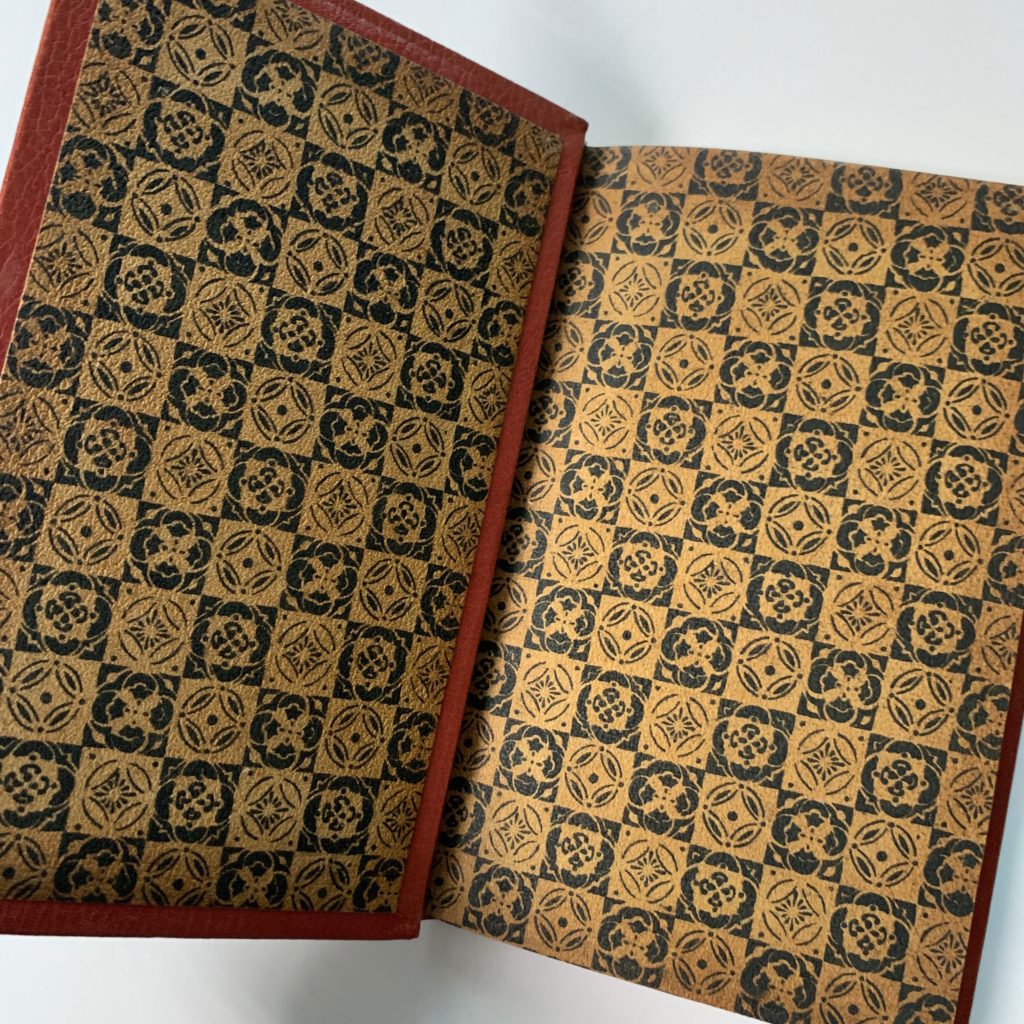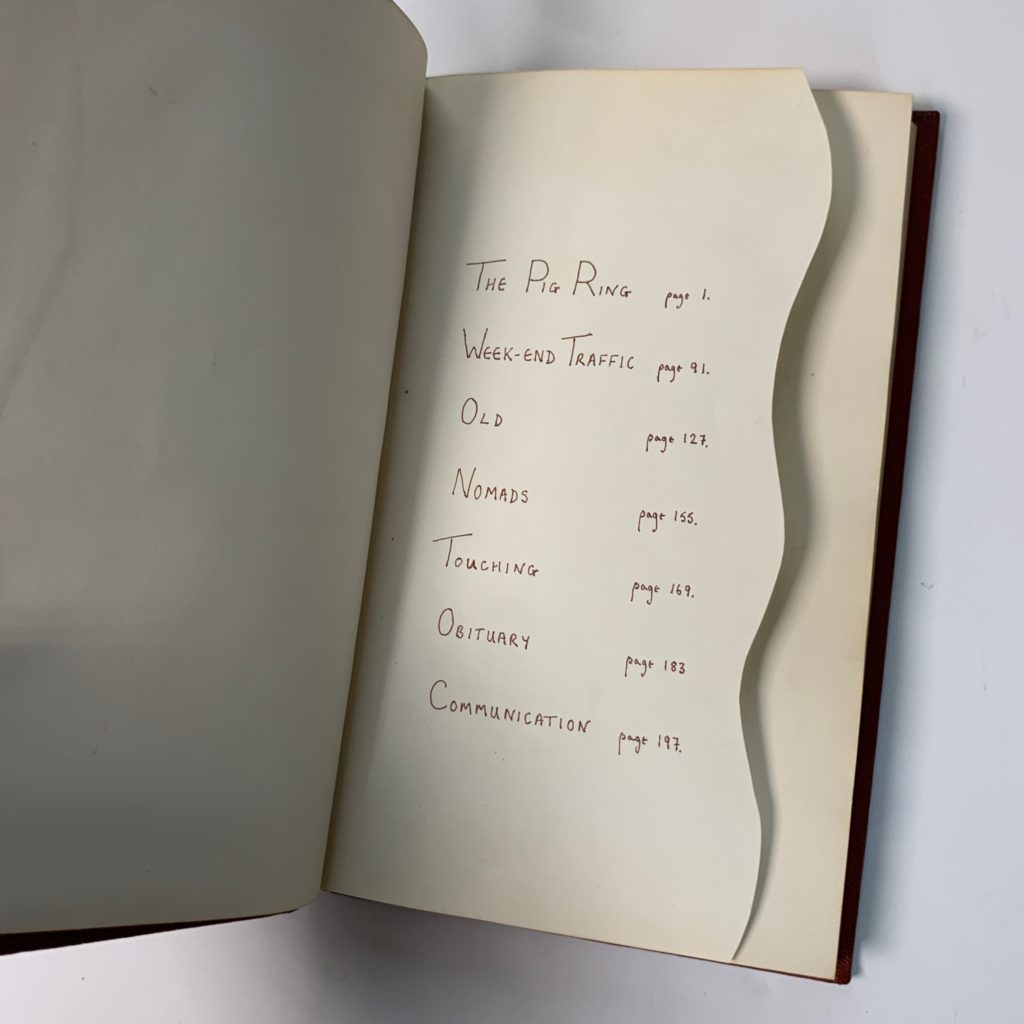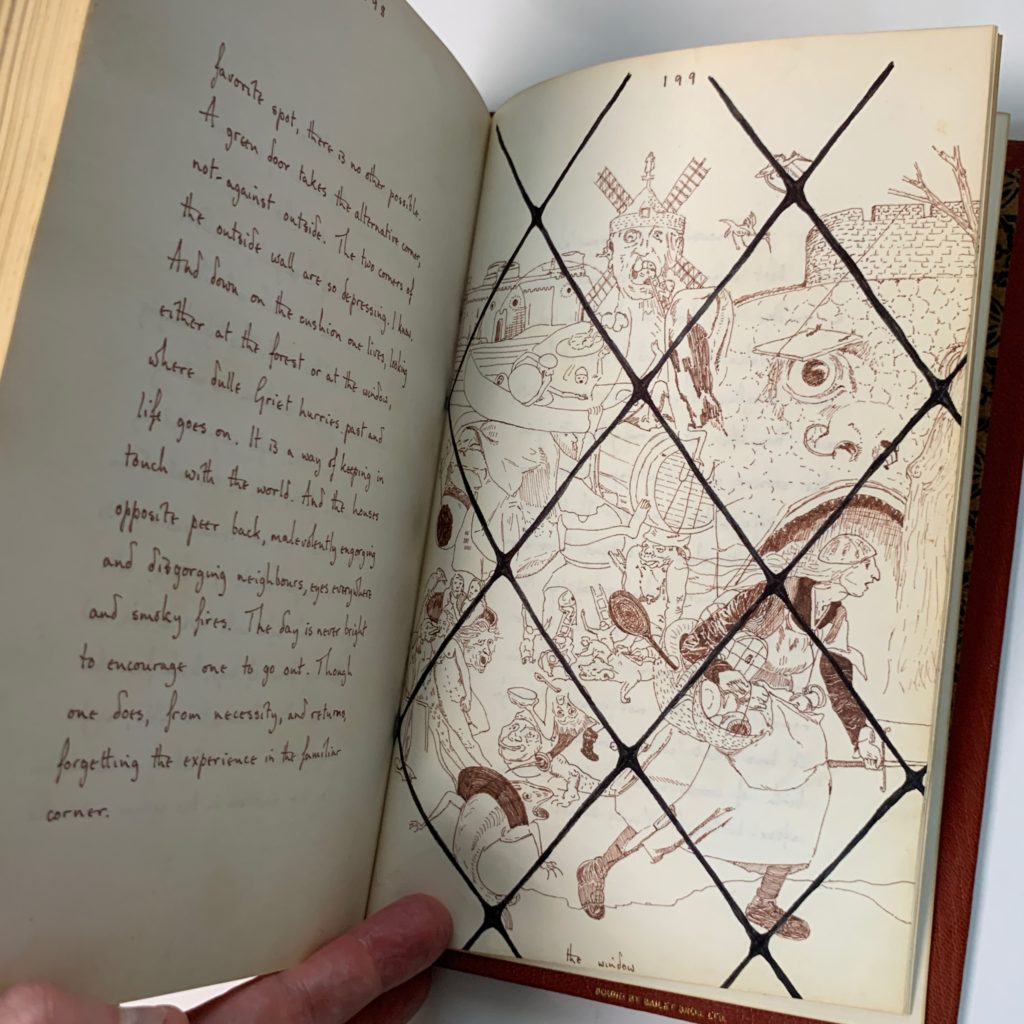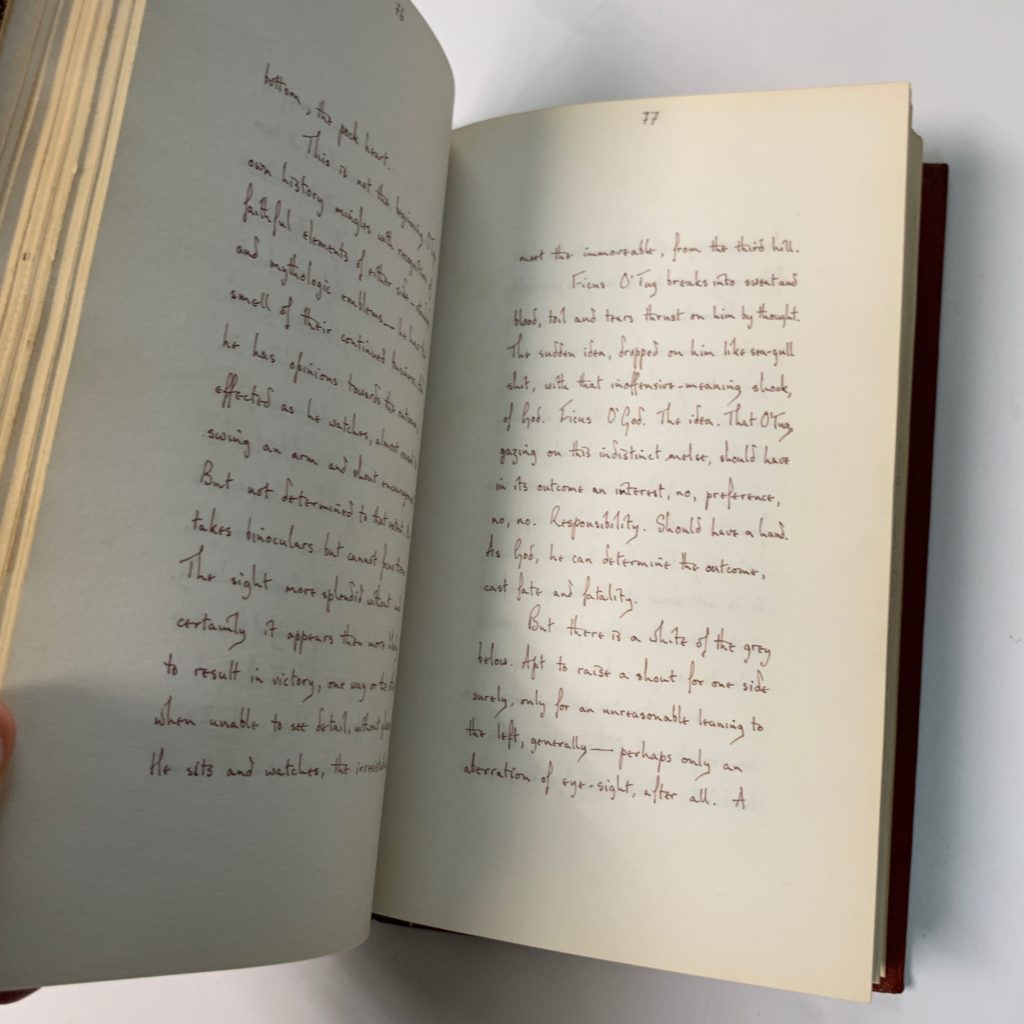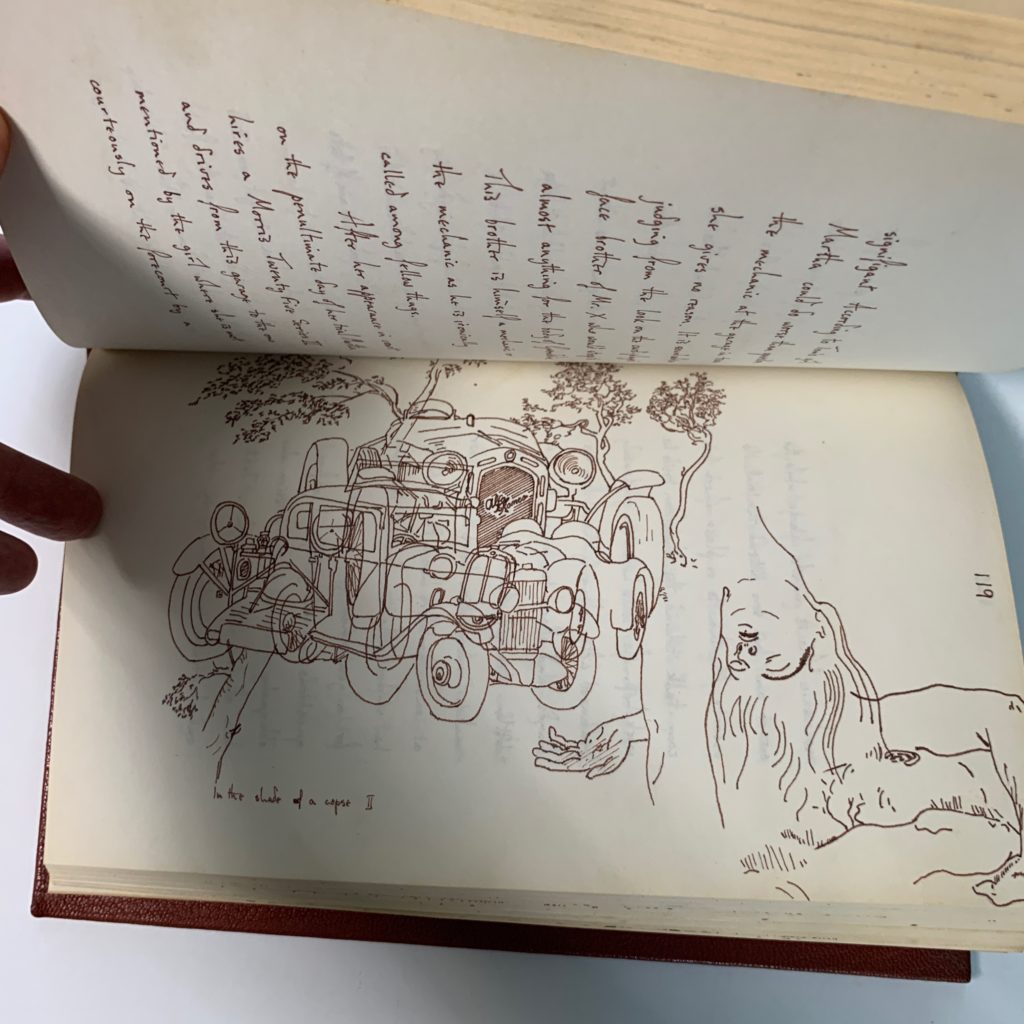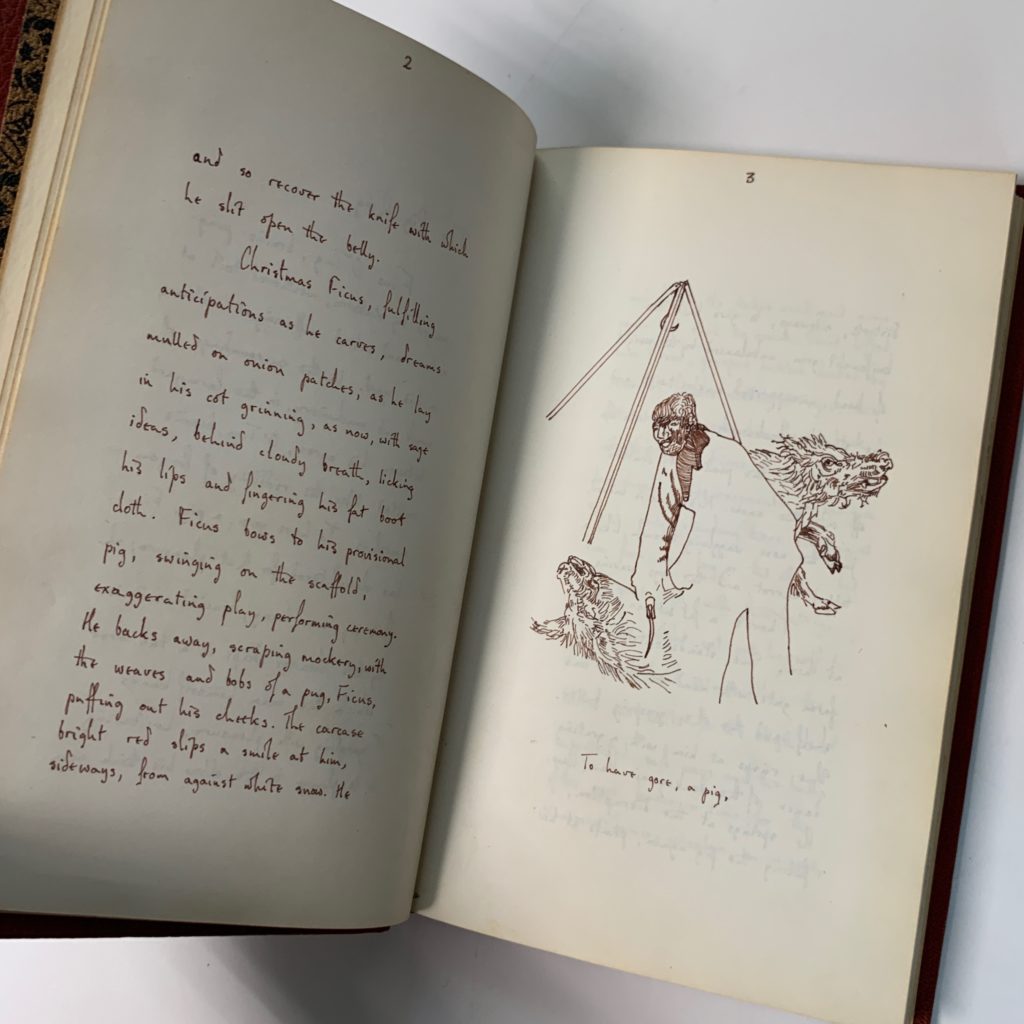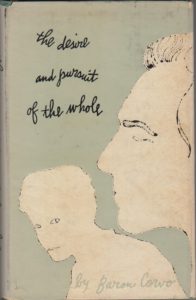105. [Anonymous]. [Untitled Original Manuscript Illustrated Artist's Book].
$2500
“The stand of yews, statues are noseless lichen smirched ghosts; the nomads approach, drums of their marches on stone lane steps; the sound of the engines remembered through plate glass while sitting at at pâté de foie” (157).
Enigmatic and disquieting collection of six short stories and one 90-page novella, neatly and distinctively handwritten in brown ink. The table of contents gives titles for each work, but no author’s name; the bookplate, with initials “A. J.”, offer the only clue to the item’s creator or owner.
The material veers in tone from the parodic to the surreal to the philosophically melancholic; the style incorporates a recondite vocabulary (“the pyral tarantism of being in the world”) and a single consistent, insistent voice, alternating long unpunctuated Joycean streams of frantic consciousness with brief and airless sentence fragments. A perpetual undercurrent of violent sexuality surfaces as much in the settings and scenery as in the events: a car crash; a game of human chess; a blazing furnace; a slaughterhouse.
The authorial narration steps out of its queasy dreamtime now and then to comment on itself (“[I]t would appear that this is the whim of the authors ince reason is no part of the relation”) or to focus on a concrete and precisely dated image: “Week-end Traffic” catalogs automobile makes and models in obsessive, parodic, almost Ballardian detail — a 1931 Alfa-Romeo; a ’28 Lombard, a Triumph Scorpion — and characters offer each other Passing Cloud cigarettes. But for the most part, settings are as hard to place as the book itself. Character names are almost, but not quite, real: Nish, Rogoze, Valetta, Fedor, Shad.
Illustrated with line drawings in brown pen (presumably also by the writer), with occasional accents in black, and brief captions taken from the scenes they illustrate. The execution is skilled but careful, often quoting other artwork (as in the illustration to the final story, “Communication,” whose subject is the Breughel painting Dulle Griet; we see a copy of Brueghel’s scene through the latticework of a window.) Other illustrations appear to be carefully composed from copies or multiple tracings, giving something of the effect of a Max Ernst collage — particularly the images of a horse-headed woman and a lion-headed man, perhaps an intentional quotation from Une Semaine de Bonte. A Piranesi-esque interior gives way to a crowned woman in 20th century corset and garter belt: the Queen.
Although a precise date cannot be given, this book bears the stamp of a London bindery which operated as Bailey Bros. until a name-change in the 1970s, and references in the text place its composition after the 1930s; we estimate the date of production to be circa the late 1960s to early 1970s – though its private library feel perhaps hints at a possible earlier creation.
Bizarre and unsettling, yet also the product of an original voice. In short: a singular artist’s book of unique vision.
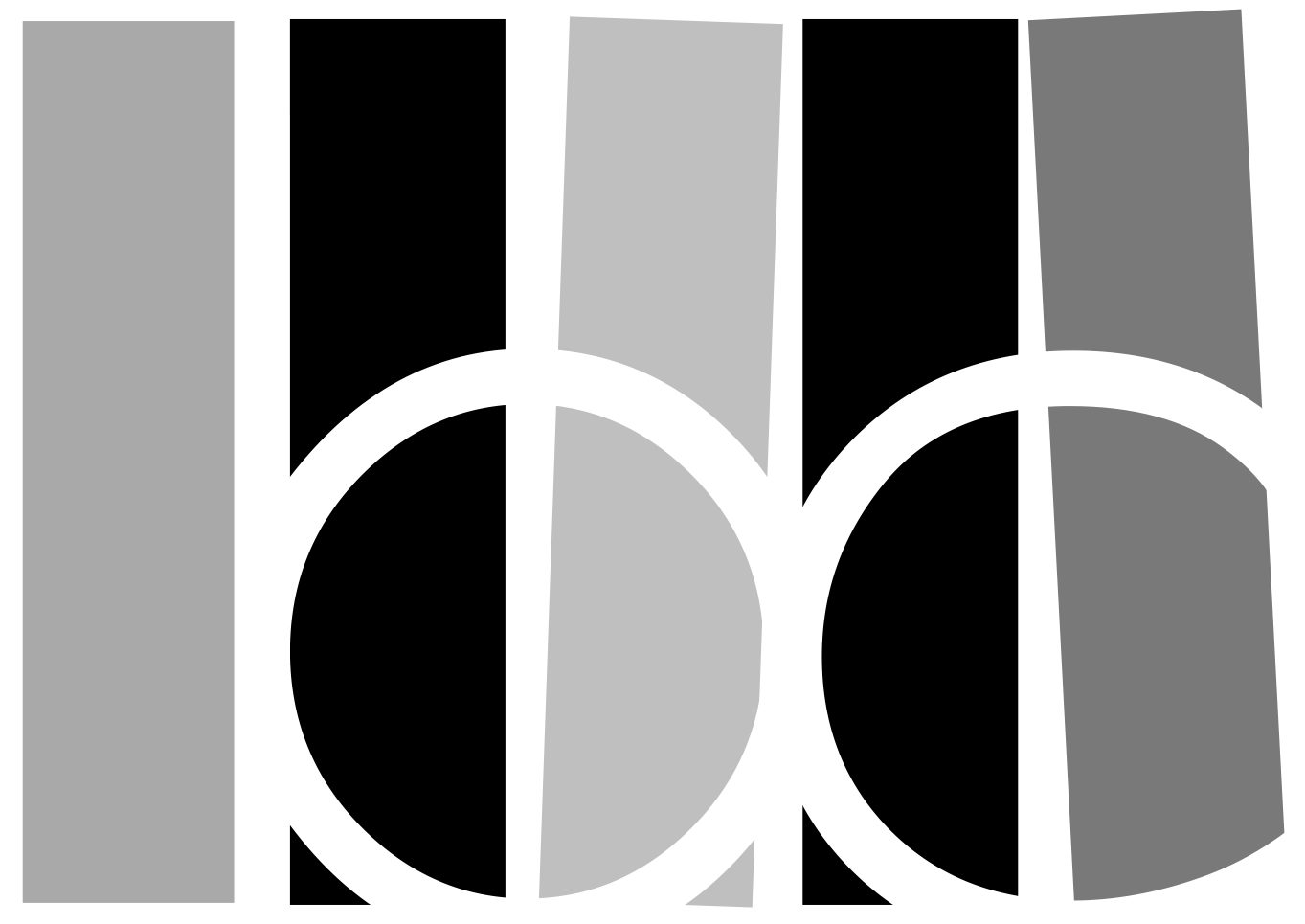
![105. [Anonymous]. [Untitled Original Manuscript Illustrated Artist](http://catalogue15.briancassidy.net/wp-content/uploads/2019/05/23231-1024x1024.jpg)

